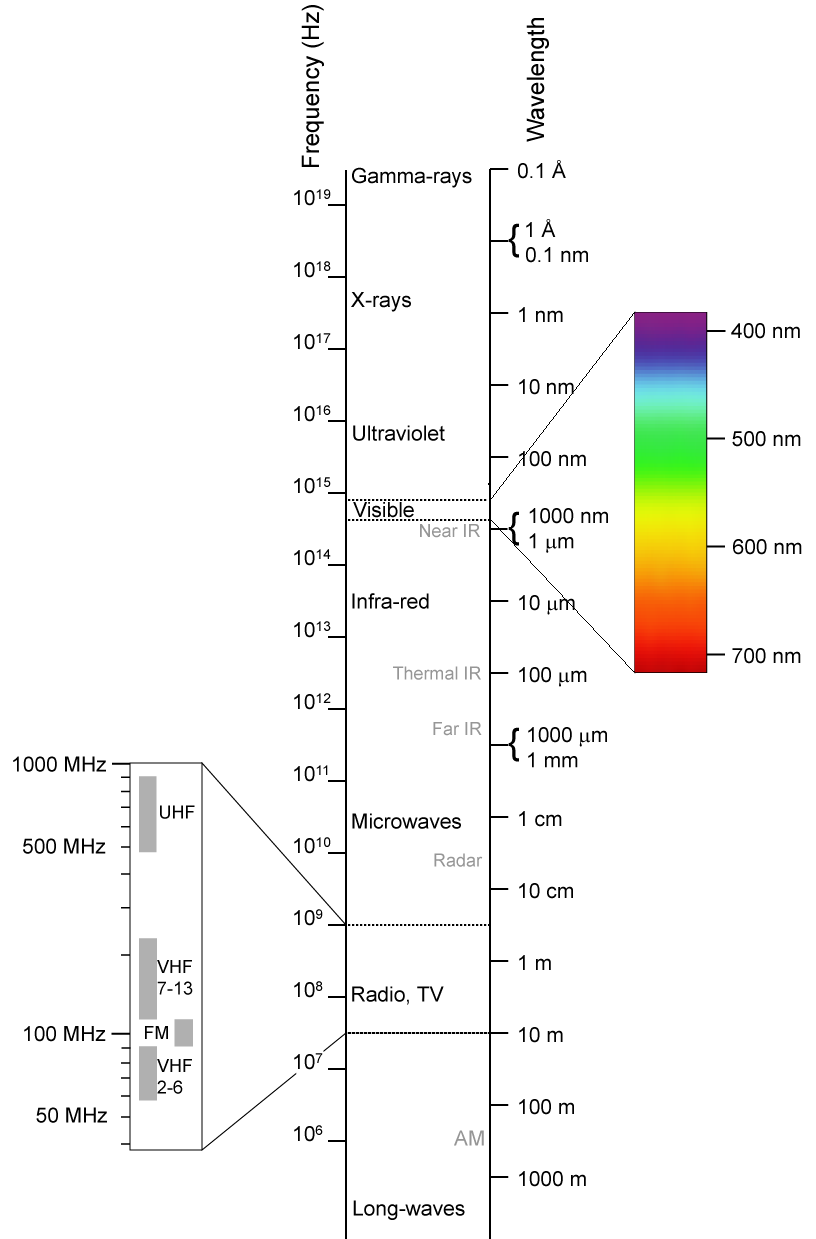What is color? = What is light? + How to identify an object? + How do we see?
What is light? = As per classical mechanics, light is an electromagnetic wave. Or more precisely, as per quantum mechanics, light is one of a force elementary particle called photon. Light has many properties. Its primary properties include: intensity, frequency or wavelength, polarization. The frequency can be from very small to very large. And light is given different name based on its frequency range. Though light has many such properties, color is not really one of them! But there is a correlation between the light frequency and the color we see.

How to identify an object? = In order to identify any object (its shape, its properties, location, movement, etc.), some elementary particles or wave is sent, and its reflection from the object is analyzed. The analysis include: reflected directions, time taken for the reflections, any changes to the reflected particles/wave, etc. For example, in electron-microscopes electron particles, in radars light, in sonars sound are used. Likewise, in nature, bats use sonar sound to navigate.
Though we use light to see, we do not send the light from us (the way bats send sonar sound). So, external light source (such as sun light) is needed. As we do not send the light, the time taken for the reflections and so distances cannot be measured. Hence we need two eyes; the light from the objects reach each eye at slightly different angle, and from this information the distances can be derived. Our eyes sense the light (sensitive to certain frequency range that we call it visible light), and convey the information received from the light to the brain as electric pulses. Based on these electric pulses, the brain calculates and derives all the visual details. And the details are shown as colorful 3D models – a nice user friendly GUI (graphical user interface).
How do 3D movies work? = As both eyes view in different angle, the movie should be taken with two cameras. If the images from each camera are given to each eye separately, we would see it in 3D. But in theaters, both images are displayed on a single screen. How to separate these images and give separately to each eye? For this purpose, one of the light's properties, polarization is used, as our eyes are not sensitive to polarization. The image from first camera is screened with vertical polarization, and the image from second camera is screened with horizontal polarization. We have to wear a glass with one side of the eye vertically polarized and the other side horizontally polarized. Now the images from each camera are received by each eye separately, and we would see it in 3D.

How do we see? = The brain creates models for everything using its vast neural network. These models are something similar to how voice/songs are stored in a record-disk or a computer-disk. Based on the stimuli from the eyes, the brain creates hierarchy of visual models. But who is going to see/use these models? The brain itself! The brain uses its own models to learn further and create additional hierarchy of models, to correct any errors in the previously created models, and to respond appropriately. Thus, the brain refers itself and learns itself recursively. This is something similar to recursive programs in computers. This is a strange loop where the brain sees its own visual models. This is what we feel as seeing - visual consciousness! This is where light intensity is seen as bright, and light frequencies are seen as colors.
This is the fundamental basis for the consciousness in general. This is how we feel all our senses and emotions. This is how sounds from the ears become hearing, some chemical molecules in the nose become smell and some chemical molecules in the mouth become taste. This is how we feel self (self-consciousness), love, pain and pleasure. Though often our feelings are in response to external stimuli, the brain is capable of simulating any feeling without any external stimuli using its existing models. For example, that is how we see in our dreams.
This is a kind of virtual world created by our brain. There is no red, green or blue in the external world. There is no smell or taste in the external world. There is no ecstasy, pleasure or pain in the external world. All our feelings only exist in the brain's virtual world. In the external world, I am a human, an animal. In the brain's virtual world, I am a soul!

2 comments:
There is one Sanskrit verse I have known which means "there is one universe to each person" (or there are as many universes as many people)....makes sense. Everything (truth, objesctivity, facts, opinions, understanding etc...) are as per individual's own perspective.
Thanks Sunil for your nice comment.
Similar idea exists in Buddhism as well. This is in general part of eastern philosophy. That is good. Yet, the spiritual world is very much mystified, not just virtual world. Souls, sprits and ghosts are searched in so many places. Some hide most part of their life from the external world, to extend/enhance this virtual world to create enlightenment, fantasies and many other illusions; forgetting that the virtual world is meant to understand the external world, and the it means nothing on its own. Here, I just want to connect the dots and say, color is as mystified as soul, or soul is as simple idea as color.
Post a Comment